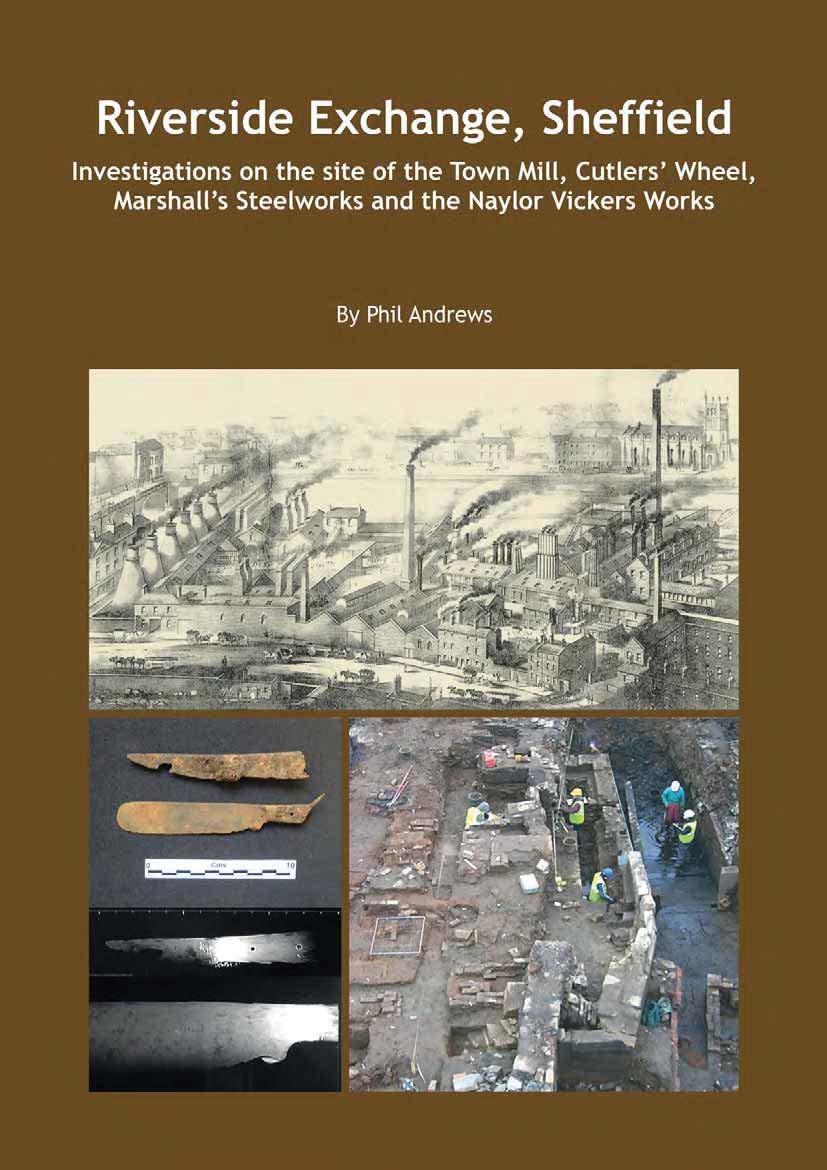Riverside Exchange, Sheffield: Investigations on the site of the Town Mill, Cutlers' Wheel, Marshall's Steelworks and the Naylor Vickers Works
Phil Andrews

Description
Excavations at Riverside Exchange in the centre of Sheffield revealed significant evidence of the city's post-medieval industrial expansion and, in particular, unique remains relating to early steelmaking.
Nothing of the medieval Town Mill survived but the goit which supplied water to the mill remained an important element within the site. Mid-17th-century tanning pits were followed by the Cutlers' Wheel, built in the mid-18th century to provide a water-powered grinding workshop. Notable assemblages of cutlery, pottery and clay tobacco pipes were recovered.
Marshall's steelworks was established in the mid-1760s, an innovative, integrated works which combined cementation furnaces and the newly developed crucible steel process. The remains of three early cementation furnaces are of national significance and have been preserved in situ. Analysis of the two crucibles has provided the earliest evidence for their composition and the Huntsman process, at a time when these were a closely guarded secret.
From the 19th century, documentary, map and archaeological evidence combine to give a picture of the development of the Naylor Vickers works, which took over Marshall's and later became one of Sheffield's major steelworks.
Details
| Published | Published By | Pages | ISBN | ||||||||||||||||||||||||||||||||||||||||||||||||||||||||||||||||||||||||||||||||||||||||||||||||
|---|---|---|---|---|---|---|---|---|---|---|---|---|---|---|---|---|---|---|---|---|---|---|---|---|---|---|---|---|---|---|---|---|---|---|---|---|---|---|---|---|---|---|---|---|---|---|---|---|---|---|---|---|---|---|---|---|---|---|---|---|---|---|---|---|---|---|---|---|---|---|---|---|---|---|---|---|---|---|---|---|---|---|---|---|---|---|---|---|---|---|---|---|---|---|---|---|---|---|---|
| Jan. 1, 2015 | Wessex Archaeology | 96 | 978-1-874350-84-2 | ||||||||||||||||||||||||||||||||||||||||||||||||||||||||||||||||||||||||||||||||||||||||||||||||
| License Information | |||||||||||||||||||||||||||||||||||||||||||||||||||||||||||||||||||||||||||||||||||||||||||||||||||
| Copyright © Wessex Archaeology. This work is openly licensed via CC BY-NC-ND 4.0 | |||||||||||||||||||||||||||||||||||||||||||||||||||||||||||||||||||||||||||||||||||||||||||||||||||
